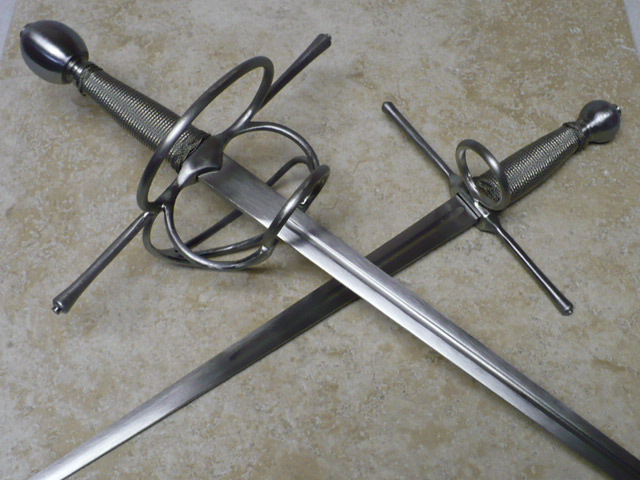Posts: 226 Location: Hobart, Australia
Thu 24 Apr, 2008 1:01 am
The problems with classification is that it breaks down at the boundaries. We can all agree that the weapon shown in the sword and buckler section of Talhoffer (1467), with a broad blade and a total length of 55% of the height of the wielders is a sword and that the weapon shown in Capo Ferro (1610) with a much narrower blade and 78% of the height of the wielder is a rapier. Clearly there was a change in weapon form between these two authors. But where do we classify Agrippa's weapon with a narrower blade than Talhoffer, but broader than Capo Ferro and a length 65% of the height of the wielder? Agrippa called it a sword, but in England the same weapon may have been called a rapier.
Ultimately it's a bit pointless to argue at the boundaries. It's like arguing whether the end of the middle ages was at the Battle of Bosworth in 1485 or when
Charles VIII invaded Italy in 1494. Clearly 1400 is medieval and 1600 is early modern and somewhere between those dates a bunch of stuff changed. Nobody woke up one morning, turned to his wife and declared, "strewth love, we've slept through the alarm and missed the start of the Early Modern Period".
Single handed swords made for civilian use changed gradually over a period of about 100 years and became something quite different to what people had previously used. You can call the transitional weapons 16th century swords, early rapiers or spada da filo. There is no absolute right or wrong answer and getting hung up over it is not terribly productive. There are some things you shouldn't call them. Sidesword appears to be a curatorial term from the early 20th century and should probably be avoided, though I find it a useful term as everyone understands what you mean. Cut and Thrust Sword is a term used in the 18th century to describe spadroons. As the term was not used in the 16th century but WAS used later to describe a different type of sword it should definitely be avoided as potentially leading to enormous confusion.
Oh, and what Bill said about rapier cuts is correct. The masters taught cuts and anyone who thinks that you can slam three pounds of steel into someone's head without diminishing their fighting ability has clearly never been hit with a rapier in a bout.
Cheers
Stephen

